Overview
Arduino MKR1000 allows you to build your next smart project. Ever wanted an automated house? Or a smart garden? Well, now it’s easy with the Arduino IoT Cloud compatible boards. It means: you can connect devices, visualize data, control and share your projects from anywhere in the world. Whether you’re a beginner or a pro, we have a wide range of plans to make sure you get the features you need.
Arduino MKR1000 has been designed to offer a practical and cost effective solution for makers seeking to add Wi-Fi connectivity to their projects with minimal previous experience in networking. It is based on the Atmel ATSAMW25 SoC (System on Chip), that is part of the SmartConnect family of Atmel Wireless devices, specifically designed for IoT projects and devices.
The ATSAMW25 is composed of three main blocks:
- SAMD21 Cortex-M0+ 32bit low power ARM MCU
- WINC1500 low power 2.4GHz IEEE® 802.11 b/g/n Wi-Fi
- ECC508 CryptoAuthentication
The ATSAMW25 includes also a single 1×1 stream PCB Antenna.
The design includes a Li-Po charging circuit that allows the Arduino/Genuino MKR1000 to run on battery power or external 5V, charging the Li-Po battery while running on external power. Switching from one source to the other is done automatically.A good 32 bit computational power similar to the Zero board, the usual rich set of I/O interfaces, low power Wi-Fi with a Cryptochip for secure communication, and the ease of use of the Arduino Software (IDE) for code development and programming. All these features make this board the preferred choice for the emerging IoT battery-powered projects in a compact form factor.The USB port can be used to supply power (5V) to the board.The Arduino MKR1000 is able to run with or without the Li-Po battery connected and has limited power consumption.
The MKR1000 Wifi module supports certificate SHA-256.
Warning: Unlike most Arduino & Genuino boards, the MKR1000 runs at 3.3V. The maximum voltage that the I/O pins can tolerate is 3.3V. Applying voltages higher than 3.3V to any I/O pin could damage the board. While output to 5V digital devices is possible, bidirectional communication with 5V devices needs proper level shifting.
Getting Started
You can find in the Getting Started section all the information you need to configure your board, use the Arduino Software (IDE), and start tinker with coding and electronics. Full details and examples on how to use the WiFi interface are available in the WiFi101 Library reference page.
Tech specs
| MICROCONTROLLER | SAMD21 Cortex-M0+ 32bit low power ARM MCU |
| BOARD POWER SUPPLY (USB/VIN) | 5V |
| SUPPORTED BATTERY(*) | Li-Po single cell, 3.7V, 700mAh minimum |
| CIRCUIT OPERATING VOLTAGE | 3.3V |
| DIGITAL I/O PINS | 8 |
| PWM PINS | 12 (0, 1, 2, 3, 4, 5, 6, 7, 8, 10, A3 – or 18 -, A4 -or 19) |
| UART | 1 |
| SPI | 1 |
| I2C | 1 |
| ANALOG INPUT PINS | 7 (ADC 8/10/12 bit) |
| ANALOG OUTPUT PINS | 1 (DAC 10 bit) |
| EXTERNAL INTERRUPTS | 8 (0, 1, 4, 5, 6, 7, 8, A1 -or 16-, A2 – or 17) |
| DC CURRENT PER I/O PIN | 7 mA |
| FLASH MEMORY | 256 KB |
| SRAM | 32 KB |
| EEPROM | no |
| CLOCK SPEED | 32.768 kHz (RTC), 48 MHz |
| LED_BUILTIN | 6 |
| FULL-SPEED USB DEVICE AND EMBEDDED HOST | |
| LENGTH | 61.5 mm |
| WIDTH | 25 mm |
| WEIGHT | 32 gr. |
Documentation
OSH: Schematics
The MKR1000 is open-source hardware! You can build your own board using the following files:
Pinout Diagram

Download the full pinout diagram as PDF here.




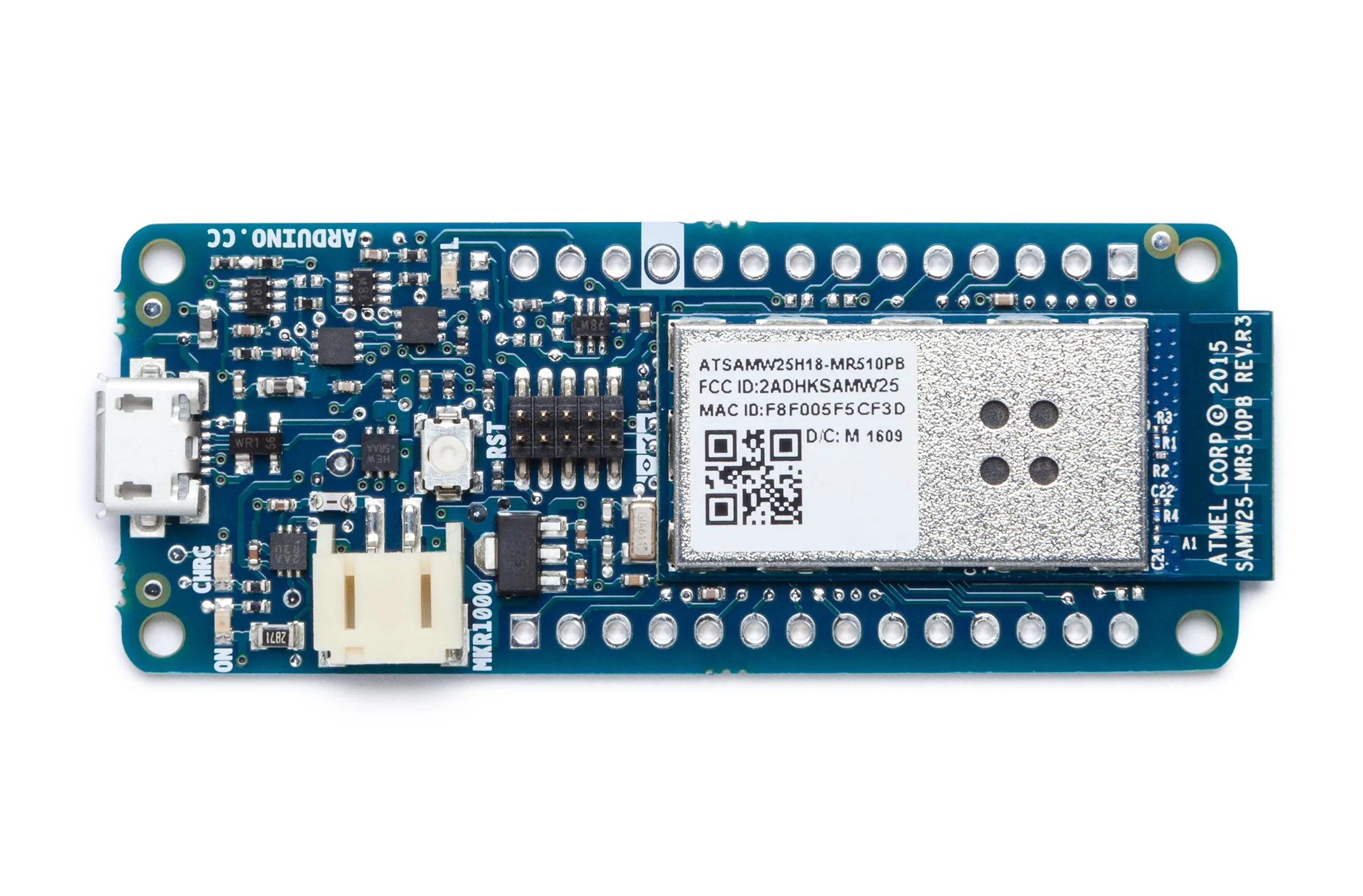
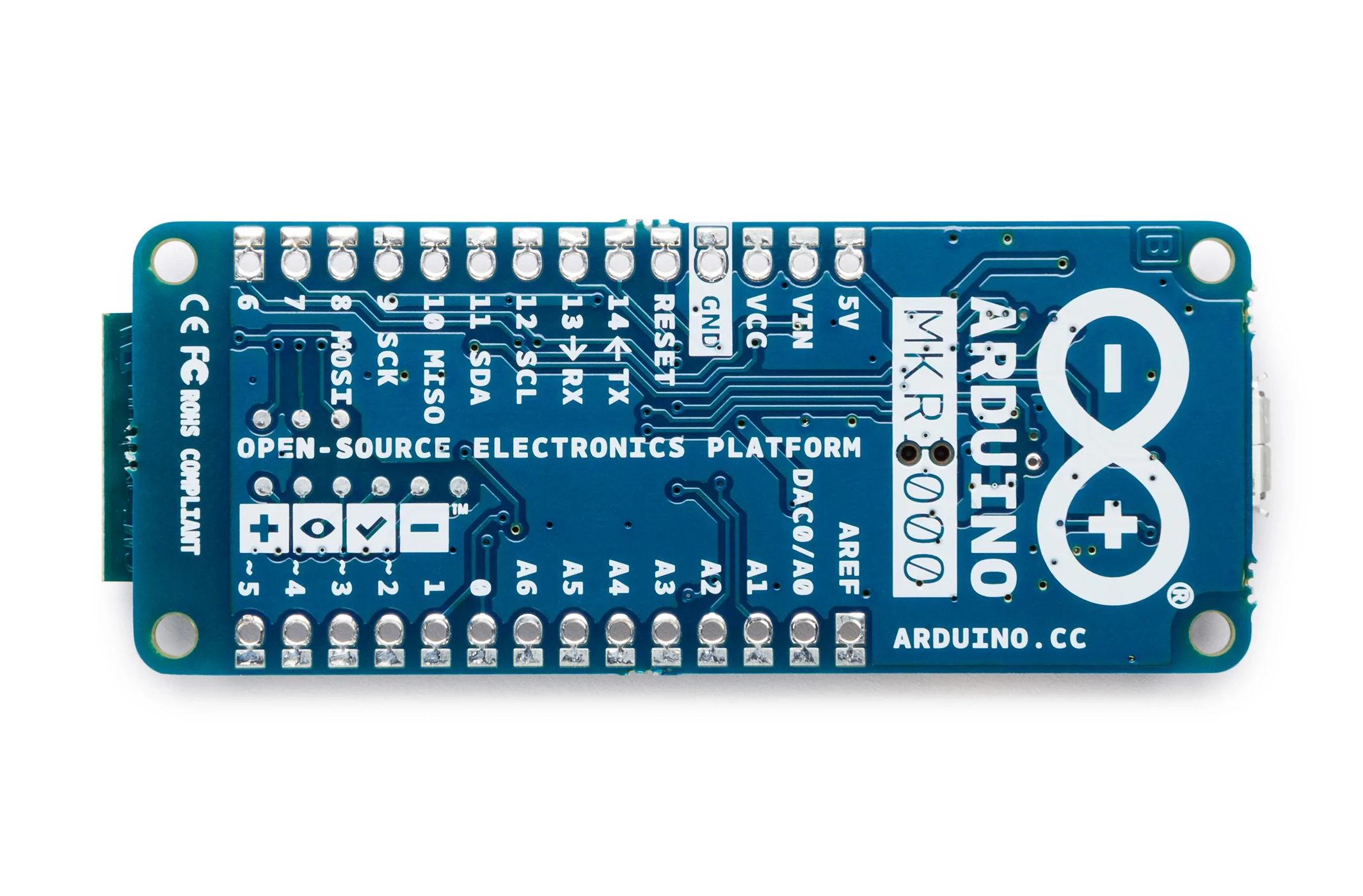
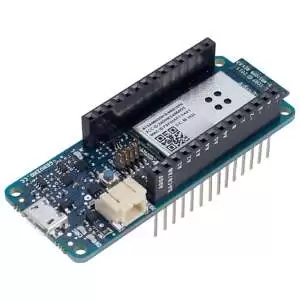

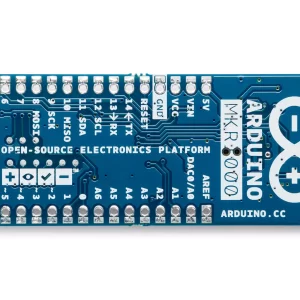
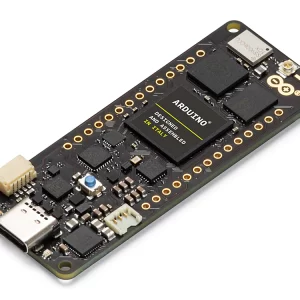


Reviews
There are no reviews yet.